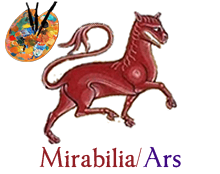Patricia GRAU-DIECKMANN
Idols that collapse. The memory of the cult of Apollo in the Flight into Egypt of the Holy Family
Ídolos que se derrumban. El recuerdo del culto a Apolo en la Huida a Egipto de la Sagrada Familia
Published in
PDF download:
Through the iconographic analysis of two representations of the Flight to Egypt of the Holy Family, one of the fifth century and another of the fourteenth century, an attempt will be made to consider the possibility of the durability in Christian art of motifs linked to the ancient Greco-Roman religion, syncretized in the cult of Apollo settled in Egypt. Two emblematic works of this iconography will be analyzed, but chronologically and geographically opposed. They are the mosaic representation of the Flight to Egypt in Santa Maria Mayor of Rome (432) and the flemish diptych of Dijon (c. 1390), by Melchor Broederlam (c. 1355-1411). Both will serve as paradigmatic images to suspect that the presence of the ancient myths was not totally eradicated from the popular imagination, at least during the period from the Early Christianity to the Late Middle Ages. The written sustenance is found in the narrations of the earliest Apocryphal Gospels. The central theme is the plastic repetition of the presence of the idols of the temples of the god Apollo that fall from their pedestals when the Holy Child is present.


















































































